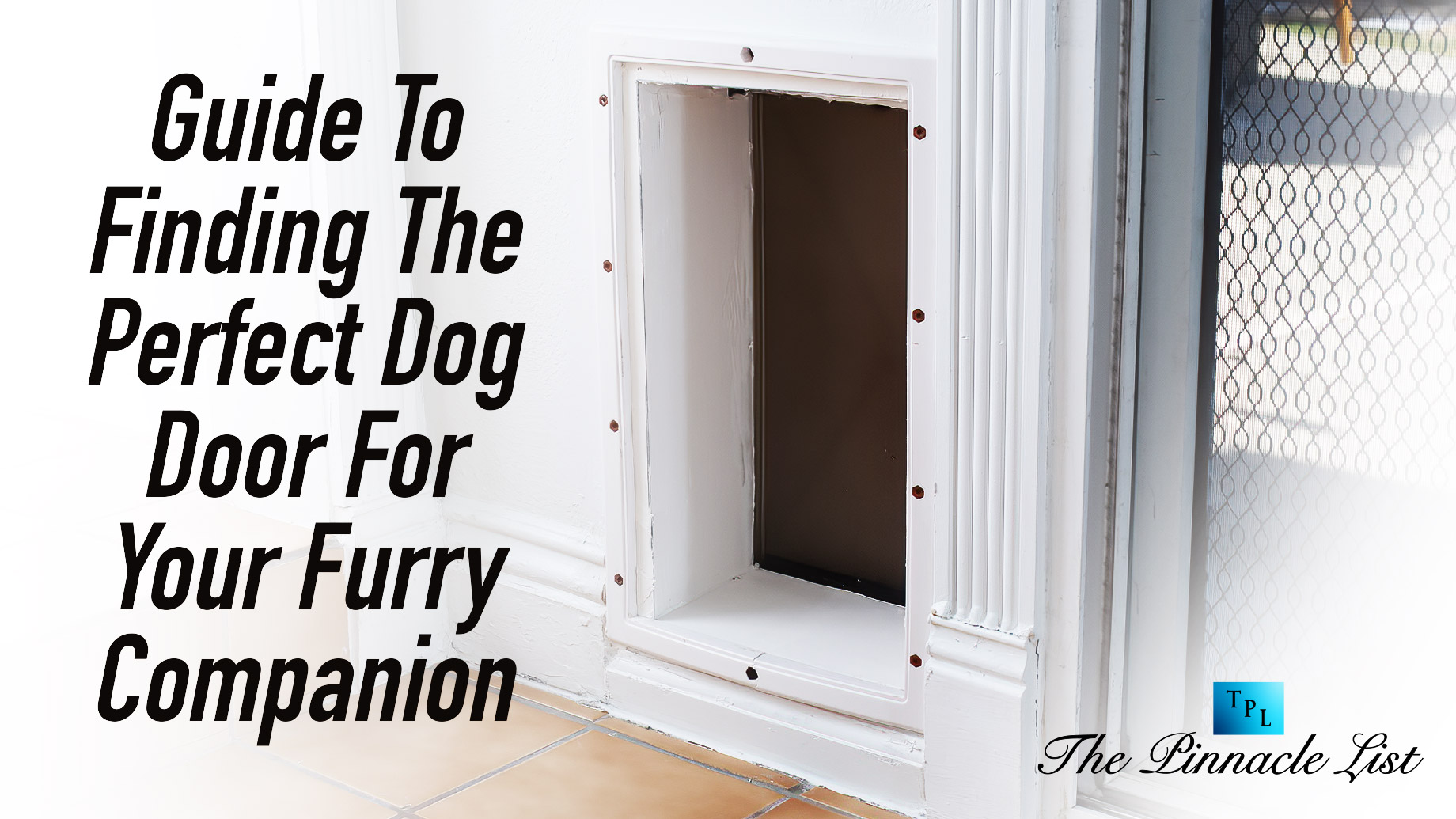
A doggy door is more than just a hole in the wall or a door; it is a portal to freedom for our four-legged friends. Imagine being cooped up inside all day, staring longingly out the window as the world passes by. A doggy door allows our canine companions to come and go as they please, to run and play in the fresh air and sunshine, to explore and sniff, and be a dog.
It is the gateway to a world of possibility, a little piece of independence in an otherwise human-controlled environment. And when dogs come bounding back through that door, wagging their tails and covered in grass and dirt, we can’t help but feel a sense of joy and contentment knowing that our furry friends are delighted and fulfilled.
Now that we know how crucial a dog door is, you might want to find the perfect one for your furry companion.
Two Main Types Of Dog Doors
Dog doors come in all shapes and sizes, each with a distinct set of features to suit the needs of both the dog and the owner.
Door-mounted dog door
Door-mounted dog doors are installed into an existing door to allow pets to enter and exit the home without needing human assistance. This pet door for doors consists of a flap or opening in the door, typically made of plastic or vinyl that is large enough for a pet to pass through. The flap usually attaches to a frame mounted on the door, and the pet can easily open and close it.
Door-mounted dog doors come in a variety of sizes to accommodate different pet breeds and sizes. You can install them on any door, including wooden, metal, and glass, both inside and outside your home.
Having a dog crate is also beneficial, as it provides a safe and comfortable space for your dog when they are not using the dog door. Also, with a high anxiety dog crate, you can be sure your pet won’t damage or destroy the crate, as it is designed to withstand anxious behavior. This will give you peace of mind and ensure your pet is always safe when using the dog door.
Some popular types of door-mounted dog doors include:
- Standard pet doors: These are the most basic type of pet doors, and they consist of a simple flap and frame that you or a professional can easily install into an existing door. They are typically the most affordable and suitable for small- to medium-sized pets.
- Electronic pet doors: These doors use electronic technology to open and close the flap, and a collar worn by the pet typically controls them. They are more expensive than standard pet doors, but they offer increased security and convenience, as you can program them to only open for specific pets.
- Magnetic pet doors: These doors use a magnetic collar worn by the pet to open and close the flap. They are similar to electronic pet doors in terms of price and functionality but do not require batteries.
When installing a door-mounted dog door, make sure to install it in the correct location and height to ensure that your pet can easily use it. Furthermore, ensure proper sealing of the door to prevent drafts and maintain energy efficiency.
Wall-mounted dog doors
Wall-mounted dog doors, also known as “through-the-wall” pet doors, are designed to be installed into a wall rather than a door. They typically consist of a flap or opening in the wall and a frame mounted on the home’s exterior.
One of the main benefits of wall-mounted dog doors is that they are larger than standard door-mounted pet doors, making them suitable for larger pets or homes with multiple pets. They also offer more flexibility in terms of installation, as you can place them in a variety of locations, such as a fenced-in area or a dog run.
However, installing a wall-mounted dog door can be more complex and time-consuming than installing a door-mounted pet door. It involves cutting a hole in the wall (which can be tricky), requires specialized tools, and can be costly.
Like door-mounted doors, wall-mounted pet doors come in different types, such as electronic, magnetic, and standard. A collar around the dog’s neck controls the electronic and magnetic doors, offering increased security and convenience. Standard wall-mounted dog doors do not have any electronic or magnetic features, but they are still useful for larger pets or homes with multiple pets.
Bear in mind that, as with door-mounted dog doors, wall-mounted ones can let in unwanted animals, bugs, and even burglars, so it’s crucial to take the necessary precautions to ensure the security of your home.
Take Into Account The Following Factors When Buying A Dog Door
- Size: Make sure to select a dog door that is the appropriate size for your pet. Measure your dog’s height and width to ensure a proper fit.
- Material: Dog doors come in different materials, such as plastic, metal, etc. Choose a material that will withstand the wear and tear of your pet and provide enough security.
- Installation location: Consider where you will install the dog door. Some models are designed for walls, while others are designed for doors or windows.
- Security: Look for dog doors with locking mechanisms or other security features to keep other animals out.
- Weather resistant: If you live in an area with a lot of rain or snow, look for dog doors designed to be weather-resistant.
- Cost: Compare the costs of different dog door models and choose one that fits within your budget while meeting your needs.
- Warranty: Look for a dog door with a warranty in case of any defects or issues.
No matter which type of dog door you choose, you can rest assured that your furry friend will have the freedom to come and go as they please, allowing them to live a happier, more fulfilled life.